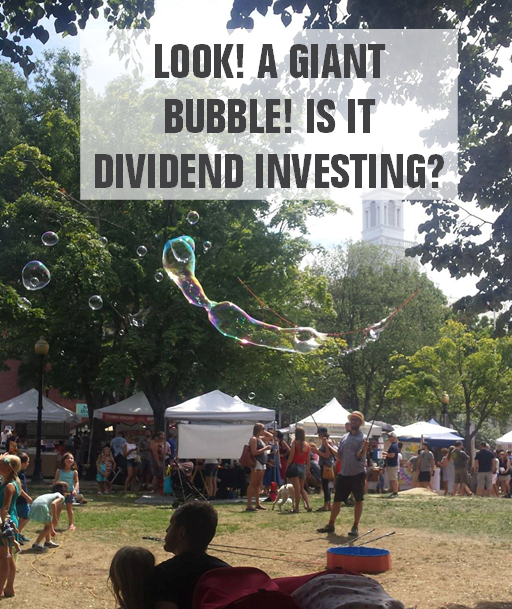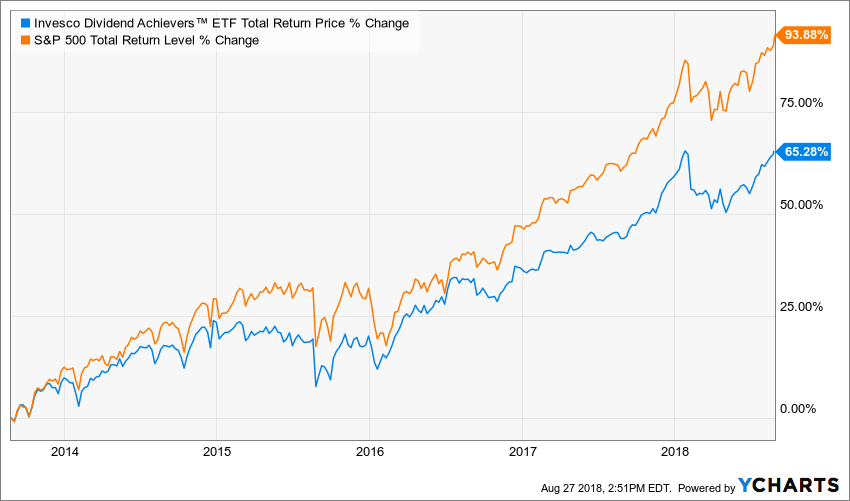
In only a few weeks, we will celebrate the 10th anniversary of the latest bear market. Back in September 2008, the US stock market collapsed, and the rest of the world joined in this panicked moment. Times were dark as the nerve of the economy was touched; banks were in trouble. What made this crisis worse than others was the impact of banks refusing to land to each other, refusing to share their capital. In capitalism, money flowing from borrower to lender is like the blood going through your veins. If you cut the valves, it doesn’t take much time before your brain shuts down and your whole system collapses.
In an effort to improve liquidity on the market, central banks around the world started to print money and inject it into the market. They also cut their interest rate down to zero. With virtually no inflation and interest rate on GICs and with bonds going down the drain, there wasn’t much left for income seeking investors. A whole generation of retirees and soon to be retired investors were desperately looking for other ways to create the income they need to retire. This is when Dividend Investing was put back on the map as a “trendy strategy”.

The need for income
Where do you find your yield when you call the bank to renew your GIC and they offer you 1.75% for 5 years? One might think it will get bonds. Unfortunately, new municipal bonds were offering at about the same range or yield back in 2009. Investors were in a panic, calling their brokers and asking them about alternatives.
How about a blue chip paying you 3-4% yield? The broker suggested. Those companies have been in business since the age of time and started paying dividend when you were kids. They are not guaranteed, but it’s almost like they are!
And here came a massive amount of money leaving the magical and safe world of bonds and GIC’s to be now invested in the wild jungle of the stock market. But some brokers have found the hidden fountain of youth; the eternal dividend paying grail! Stock values were low, yields were higher than usual; this was the perfect combination for many investors.
Back in 2009, many great blue chips along with stable utilities and REITs were offering an incredible source of income for a relatively low risk. That is what they said anyway…
The illusion of safety
With the payment of dividend comes the illusion of safety. Each quarter (or each month!), you receive your pay check without doing nothing. Companies have been paying dividends for so many years that their payments don’t seem like a privilege, it is now a due.
Many investors pick companies according to their yield. The higher, the better. Since the stock market didn’t go down in the past 10 years, it seemed like no companies would run into trouble again. It seemed that even a 9% dividend yield appear safe. I keep reading comments like “The company you just reviewed isn’t interesting at all, it only pays 2% yield”, “Why don’t you invest in this stock with a 7% safe yield?”. I prefer the 2% yield over the 7% anytime. Mostly because the stock with dividend you receive isn’t safe.
The dividend comes from a company’s bank account. It is most likely generated after the business made sales and generated some profit (I know, basic). But what happens when the company is having a hard time growing their business? Their expenses grow faster than they make money? The dividend will eventually be at risk. Since we seem to be riding a never-ending bull market, many of us forget about this simple (but so important) concept.
PE expansion
As the stock market pushed higher and higher, I started looking at companies price-earnings valuation. You already know I don’t spend much time in determining if a company is undervalued or overvalued. But I give much of my attention to general trends. When a stock trades at a 17 PE for over a decade and suddenly start to trade at 18, 19 and then over 20; this is when I get worried about the overall valuation.
This phenomenon is called PE expansion. When the demand for stocks is getting stronger, people are willing to pay more (PE valuation up) for the same business making the same profit. Therefore, instead of paying 17 times a company’s profit, investors are willing to pay 20 times those profit. Without doing anything, the company’s valuation is then growing… similar to the air you put in a balloon!
As dividend paying stocks were presented as a safe replacement for income seeking investors, many of them were ready to pay a higher price to get their hands on the precious quarterly payments. This is how we now have companies like Walmart (WMT) trading at PE ratio over 20. And this is how you build up a bubble; when investors pay more for the exact same thing as 5 years ago.
We are getting into a bubble… really?
Sorry dear readers, I’m not going to stand-up and start screaming we are going down this fall. I don’t think we are in a dividend investing bubble. Not yet anyway. The interest for dividend paying stock is slowly fading as interest rates are rising and bonds & GICs now offer decent yield again. Therefore, the money is slowly getting back to where it was invested 10 years ago leaving some companies in a slump. When you look at how the dividend achievers performed against the overall market in the past 5 years, you notice the phenomenon is not new:

Source: Ycharts
This is good news. This means that dividend investors will not suffer from a major drop just because others are leaving the boat. You will most likely have a lag in the market, but who cares? We are in it for the long term and the dividend growth, right?
How to protect yourself from any bubble
I still think the best way to protect my portfolio against any bubble is to focus on dividend growth paying stocks. By using a very strict set of rules with a priority on growth vectors and increasing dividends, I know I’m selecting companies that will go through the next storm like a charm. I’ve recently created an interesting list of higher yielding stocks with the same goal in mind. The retirement list (3.5%+) can be found here. That’s a great start to protect your portfolio against the next bubble!
The post Dividend Investing and its Potential Bubble appeared first on The Dividend Guy Blog.
